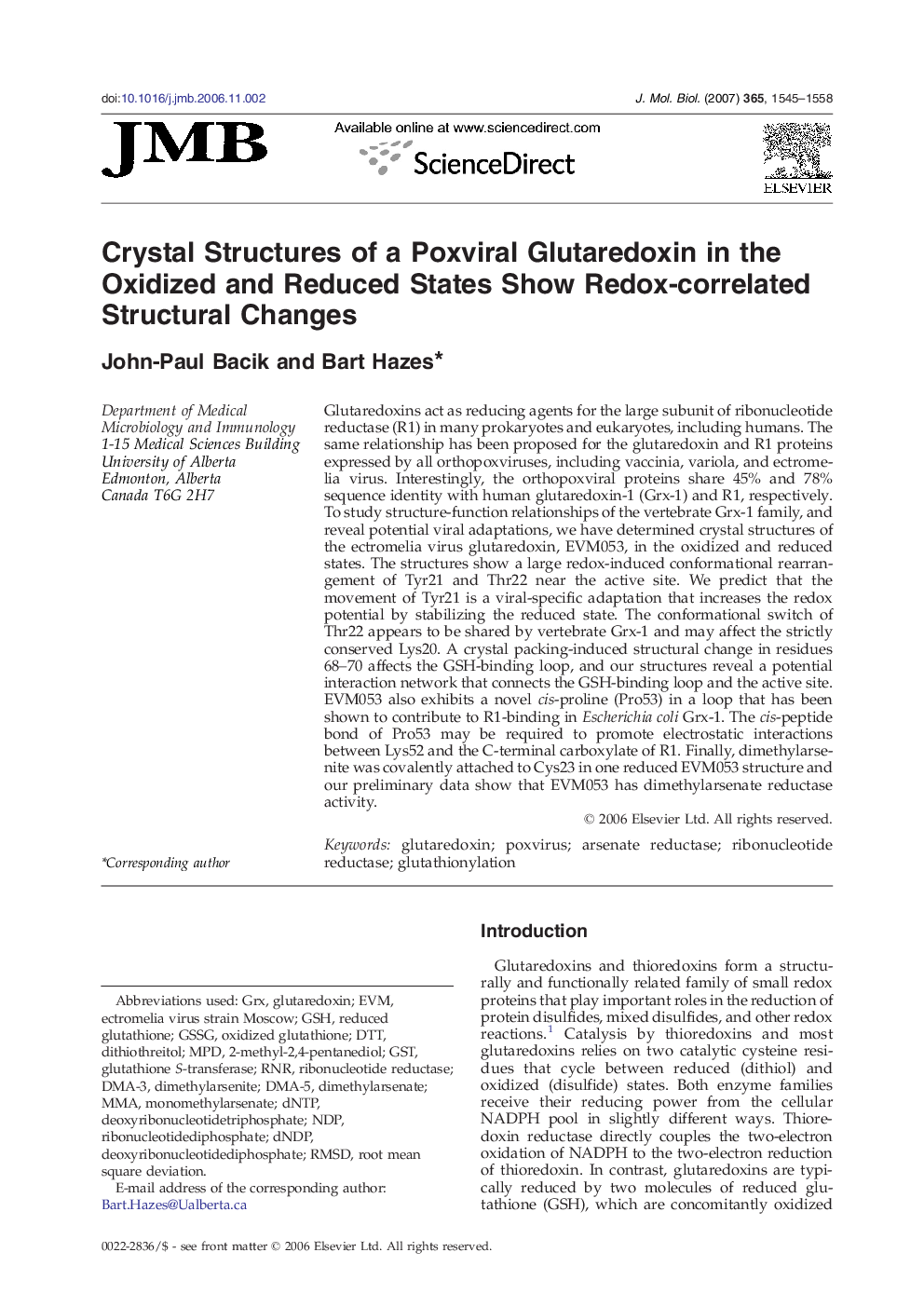| Article ID | Journal | Published Year | Pages | File Type |
|---|---|---|---|---|
| 2188800 | Journal of Molecular Biology | 2007 | 14 Pages |
Glutaredoxins act as reducing agents for the large subunit of ribonucleotide reductase (R1) in many prokaryotes and eukaryotes, including humans. The same relationship has been proposed for the glutaredoxin and R1 proteins expressed by all orthopoxviruses, including vaccinia, variola, and ectromelia virus. Interestingly, the orthopoxviral proteins share 45% and 78% sequence identity with human glutaredoxin-1 (Grx-1) and R1, respectively. To study structure-function relationships of the vertebrate Grx-1 family, and reveal potential viral adaptations, we have determined crystal structures of the ectromelia virus glutaredoxin, EVM053, in the oxidized and reduced states. The structures show a large redox-induced conformational rearrangement of Tyr21 and Thr22 near the active site. We predict that the movement of Tyr21 is a viral-specific adaptation that increases the redox potential by stabilizing the reduced state. The conformational switch of Thr22 appears to be shared by vertebrate Grx-1 and may affect the strictly conserved Lys20. A crystal packing-induced structural change in residues 68–70 affects the GSH-binding loop, and our structures reveal a potential interaction network that connects the GSH-binding loop and the active site. EVM053 also exhibits a novel cis-proline (Pro53) in a loop that has been shown to contribute to R1-binding in Escherichia coli Grx-1. The cis-peptide bond of Pro53 may be required to promote electrostatic interactions between Lys52 and the C-terminal carboxylate of R1. Finally, dimethylarsenite was covalently attached to Cys23 in one reduced EVM053 structure and our preliminary data show that EVM053 has dimethylarsenate reductase activity.
